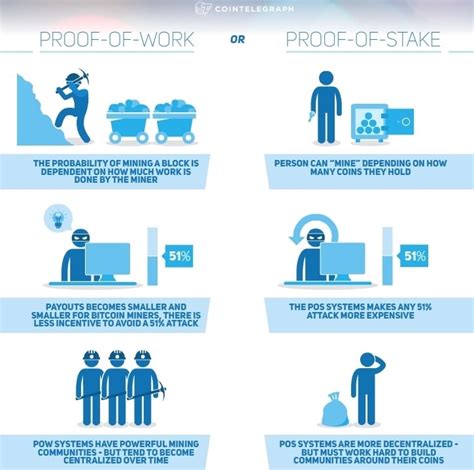cryptocurrency: a deep immersion in the stake test and consensus test test **
The world of cryptocurrencies has exploited in recent years, with thousands of new tokens and projects that arise to meet the growing demand for safe and decentralized financial systems. In the heart of this revolution is the consensus mechanism, which dictates how transactions to a major book are verified and added. Two prominent consensus mechanisms that have gained significant attention are the test of participation (POS) and the work test (POW). In this article, we will deepen the basic concepts of each mechanism, its advantages and disadvantages, and explore the implications for the adoption of cryptocurrencies.
Stake test (POS)
Proof of participation is an consensus algorithm developed by Gavin Wood in 2014. It is designed to be efficient in energy and scalable, which makes it an attractive option for large -scale implementations such as the Ethereum Network.
How works Pos:

- Validation : A validator node verifies transactions in the block chain.
- Estaca assignment : The validates are assigned a certain amount of cryptocurrencies (staked) depending on their commitment to participate in the validation process.
- Random selection : The validator with the most staked coins is randomly selected to participate in the next generation of blocks.
- Verification : The selected validator verifies the transactions and adds them to the block chain.
Advantages:
- Energy efficiency : POS requires less energy compared to Pow, so it is a more friendly option for the environment for large -scale implementations.
- Scalability : Pos can handle volumes of higher transactions than Pow due to reduced computational power requirements.
- Increased security : The random selection process makes it more difficult for attackers to manipulate the block chain.
Disadvantages:
- Centralized control : Validators are often controlled by a small group of large -scale investors, which can lead to centralization and reduced decentralization.
- Most slow transaction times : Post consensus mechanisms tend to be slower than Pow, since validators must wait for their staked coins to be verified.
Work test (Pow)
The test of work is another dominant consensus algorithm developed by Nakamoto in 2008. It is widely used in Bitcoin and other cryptocurrencies such as Ethereum.
How works Pow:
- Mining : A node of validator resolves complex mathematical riddles that validate transactions and create new blocks.
- Reward block : The winner of the puzzle is rewarded with freshly mined cryptocurrencies (block reward).
- Verification : Validators Check the transactions and add them to the block chain.
Advantages:
- Energy efficiency : POW requires significant computational power, which makes it more efficient in energy than POS for large -scale implementations.
- Scalability : Pow can handle higher transaction volumes due to its fastest block creation time.
- Increased security : The random selection process makes it more difficult for attackers to manipulate the block chain.
Disadvantages:
- High energy consumption : Pow requires substantial amounts of computational energy, which makes it a less friendly option with the environment.
- Centralized control : The domain of miners can lead to centralization and a reduced decentralization in the network.
- Transaction rates : Transaction processing times are longer due to slower block creation times.
Comparison and implications
In summary, post and pop consensus mechanisms have their strengths and weaknesses. While the POS is more efficient in energy and scalable, a small group of investors can be centralized. Pow, on the other hand, requires significant computational power, but is faster and more efficient in energy.
